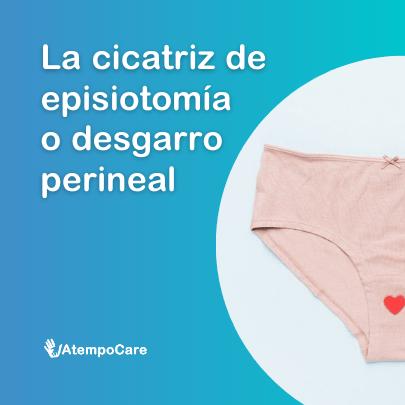If you have had an episiotomy during childbirth, this is how you should take care of it
An episiotomy is a cut that is made in the perineum with the aim of enlarging the birth canal at the time the baby comes into the world. But this incision can cause complications such as urine loss or sensitivity, difficulties in sexual intercourse, pain... For this reason, medical authorities recommend greatly limiting its application, which should not exceed 15% of deliveries.
How many episiotomies are performed in Spain?
The World Health Organization (WHO) states that "the extended or routine use of episiotomy in women who present a spontaneous vaginal delivery is not recommended." Other medical societies such as the SEGO (Spanish Society of Gynecology and Obstetrics) are of the same opinion, advocating a maximum reduction of this practice, which should only be used in cases where childbirth is complicated.
If in 2006 in Spain, 54% of deliveries had an episiotomy, the percentages have been falling to 42% in 2010 and 26% in 2019, according to data from the Ministry of Health, still well above the 15% estimated as the ideal maximum.
Ana Fernández, midwife, director and founder of Centros Mi Matrona, expresses herself along the same lines: “Episiotomy is not a recommended technique because it is opening three planes in a very sensitive area of women. It is not the same that the fabric itself gives in somewhere to that it is done artificially, ”she explains.
Pushing during childbirth: how to do them correctly
episiotomy care

The woman can indicate in her Birth Plan that she does not wish to have an episiotomy except for medical reasons. But if they finally do one during childbirth, she has to know how to take care of the stitches.
The episitomy needs two fundamental things: to be clean and dry, like any area in which stitches have been given. These are the recommendations of Ana Fernández to carry out these tasks in the best way:
Cleaning of the points
When washing the stitch area, the most important thing, as in other stages, is not to alter the balance of the vaginal microbiota. "There is an imbalance when the area is washed excessively or when the inside of the vagina is washed," explains the midwife.
Thus, it must be taken into account that the interior of the vagina contains the Doderlein bacilli, which are responsible for the area being protected. "When these lactobacilli are not in sufficient quantity, candida, fungi and other non-beneficial flora appear", warns the expert from www.centromimatrona.com.
That is why her recommendation is to apply a soft neutral gel on the external part of the skin (not on the mucous membranes) and let the water fall in the shower. Soap cannot be inserted into the vulva.
"Although women may feel a sense of relief with them, sitz baths are not recommended, as they separate the walls and if abused they can alter the intimate flora," highlights Ana Fernández.
Drying of the area
Once the cleaning of the area is finished, it is very important that it is completely dry, since humidity causes pathogens to proliferate.
Some professionals recommend using a dryer for this, but the director of Mi Matrona does not see it as advisable as she cannot ensure that the device's filters are completely clean.
"It's best to use cellulose pads and carefully pat the area dry with the pad, which is then thrown away," she says.
What compresses are the most indicated?
During the quarantine, the woman will have a bleed. It is important that the compresses used are the most appropriate, and even more so if there are stitches for the episiotomy. Thus, it is necessary to opt for cellulose tocological pads "so that there is good perspiration".
In this sense, it is necessary to check well that the pads do not have plastic (those that are fixed with adhesive to underwear usually have it). Cotton ones are not advisable either, "which can leave residues that are introduced in the area of the points", warns Ana Fernández.
Neither panty liners nor traditional pads should be used for episiotomy care. "If the woman stains little, she can use a little cellulose from toilet paper or handkerchiefs, or washable cotton fabrics before the traditional panty liner," says the midwife.
Other tips to take care of the episiotomy
In addition to the above, the expert offers these guidelines that can help in the care of the episiotomy during the postpartum period:










Related Articles